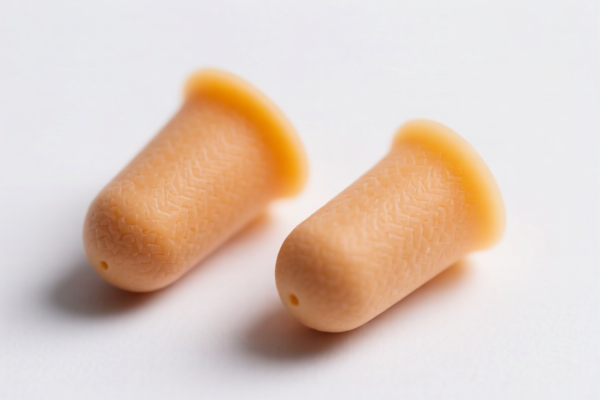| HS Code | Official Doc | Tariff Rate | Origin | Destination | Effective Date |
|---|---|---|---|---|---|
| 8518302000 | Doc | 30.0% | CN | US | 2025-05-12 |
| 8518302000 | Doc | 30.0% | CN | US | 2025-05-12 |
| 8544422000 | Doc | 55.0% | CN | US | 2025-05-12 |
| 8544499000 | Doc | 58.9% | CN | US | 2025-05-12 |
| 9001904000 | Doc | 55.0% | CN | US | 2025-05-12 |
| 9001909000 | Doc | 55.0% | CN | US | 2025-05-12 |
| 6815994170 | Doc | 55.0% | CN | US | 2025-05-12 |
| 3923500000 | Doc | 60.3% | CN | US | 2025-05-12 |
| 3923900080 | Doc | 58.0% | CN | US | 2025-05-12 |




Wired Earplugs
Wired earplugs are audio output devices that deliver sound directly to the user’s ears via a cable connection. They represent a foundational technology in personal audio, preceding the widespread adoption of wireless alternatives.
Material
- Housing: Typically constructed from plastic (ABS, polycarbonate), silicone, or metal (aluminum alloys). The material influences durability, comfort, and aesthetics.
- Cable: Commonly utilizes PVC or TPE (Thermoplastic Elastomer) for flexibility and insulation. Cable materials impact tangling resistance and longevity.
- Drivers: Employ various driver technologies, including dynamic drivers (most common, utilizing a moving coil to produce sound), balanced armature drivers (known for clarity and detail, often used in in-ear monitors), and planar magnetic drivers (offering high fidelity but generally found in higher-end models).
- Eartips: Silicone, foam, or custom-molded materials are used for eartips, providing varying levels of noise isolation and comfort.
Purpose
The primary purpose of wired earplugs is to provide a private listening experience for audio sources such as smartphones, computers, music players, and other compatible devices. They enable users to listen to music, podcasts, audiobooks, and other audio content without disturbing others. Secondary purposes include hands-free communication (with integrated microphones) and noise isolation.
Function
Wired earplugs function by converting electrical signals from the audio source into sound waves. The audio signal travels through the cable to the drivers within the earplugs. The drivers vibrate, creating sound waves that are directed into the user’s ear canal.
- Frequency Response: Determines the range of audible frequencies the earplugs can reproduce.
- Impedance: Affects compatibility with different audio sources.
- Sensitivity: Indicates the volume level produced for a given input signal.
- Microphone (optional): Enables voice communication and voice assistant interaction.
Usage Scenarios
- Commuting: Listening to music or podcasts during travel.
- Exercise: Providing audio entertainment during workouts (models designed for sport often feature secure fit and sweat resistance).
- Home/Office: Private listening for music, audiobooks, or online meetings.
- Gaming: Providing immersive audio and communication capabilities.
- Professional Audio Monitoring: High-fidelity models (in-ear monitors - IEMs) are used by musicians, audio engineers, and sound professionals for accurate sound reproduction.
Common Types
- Standard Earbuds: The most common type, featuring a simple, non-isolating design.
- In-Ear Monitors (IEMs): Designed for superior noise isolation and sound quality, often featuring multiple drivers and custom-fit options.
- Noise-Cancelling Earplugs: Incorporate active noise cancellation (ANC) technology to reduce ambient noise. These typically require a power source (battery).
- Gaming Earplugs: Feature a boom microphone and optimized sound profile for gaming.
- Sport Earplugs: Designed for secure fit during exercise, often featuring sweat resistance and noise isolation.
- Bone Conduction Earplugs: Transmit sound through the bones of the skull, leaving the ear canal open. (While often wireless, wired versions exist)
- Open-Ear Earplugs: Allow ambient sound to pass through, providing awareness of surroundings. (Often used for safety)
Wired earplugs generally refer to headphones or earphones, potentially combined with a microphone. Here's a breakdown of relevant HS codes based on the provided information:
-
8518302000: This HS code covers headphones and earphones, whether or not combined with a microphone, and sets consisting of a microphone and one or more loudspeakers: Other.
- 85: This chapter relates to electrical machinery and equipment.
- 18: Specifically for sound recording or reproducing apparatus.
- 30: Covers other loudspeakers.
- 2000: Further specifies "Other" within the loudspeaker category, encompassing headphones and earphones. The total tax rate is 30.0%, with a base tariff of 0.0%, a surcharge of 0.0%, and an additional surcharge of 30.0% after April 2, 2025.
-
8544422000: If the wired earplugs utilize insulated wire or cable with connectors for telecommunications, this HS code applies. It covers other electric conductors, for a voltage not exceeding 1,000 V, fitted with connectors, specifically those used for telecommunications.
- 85: Electrical machinery and equipment.
- 44: Electric conductors.
- 42: Other electric conductors, for a voltage not exceeding 1,000 V.
- 2000: Specifically for those fitted with connectors and used for telecommunications. The total tax rate is 55.0%, comprising a base tariff of 0.0% and a surcharge of 25.0%, increasing to 30.0% after April 2, 2025.
-
8544499000: This HS code covers other insulated wire or cable (including coaxial cable) and other insulated electric conductors, whether or not fitted with connectors.
- 85: Electrical machinery and equipment.
- 44: Electric conductors.
- 49: Other electric conductors.
- 9000: Further specifies "Other" within the electric conductor category. The total tax rate is 58.9%, with a base tariff of 3.9% and a surcharge of 25.0%, increasing to 30.0% after April 2, 2025.
According to the provided reference material, the HS code options related to 'wired earplugs' are limited, with only the following 3 found.
Customer Reviews
No reviews yet.